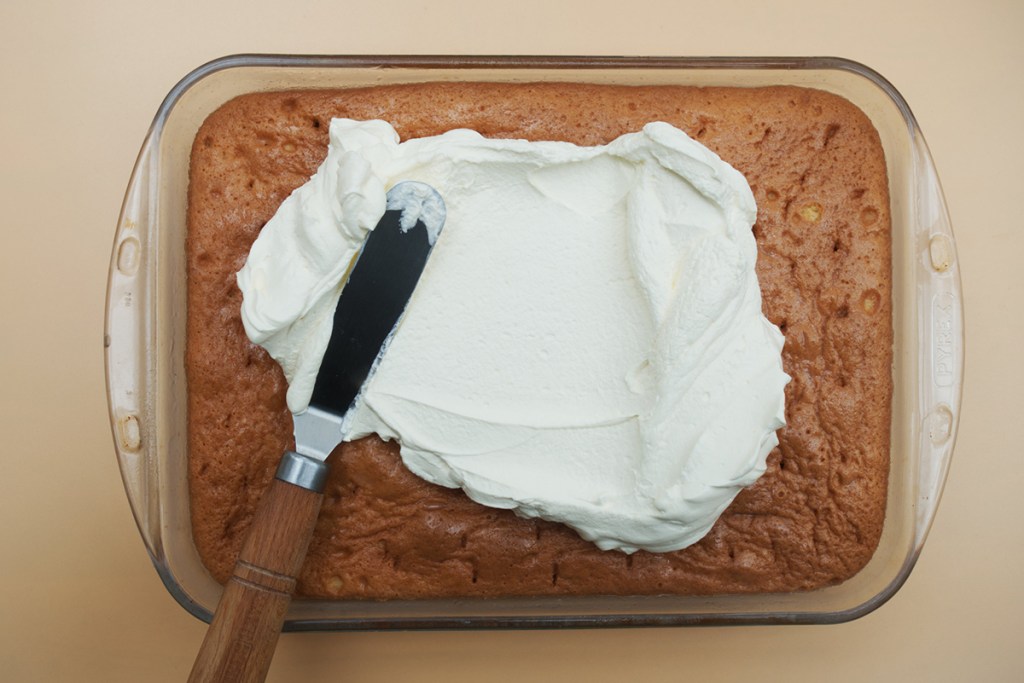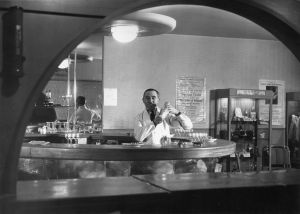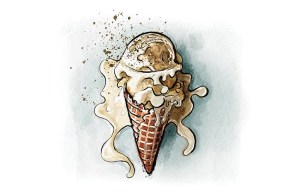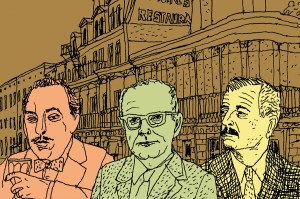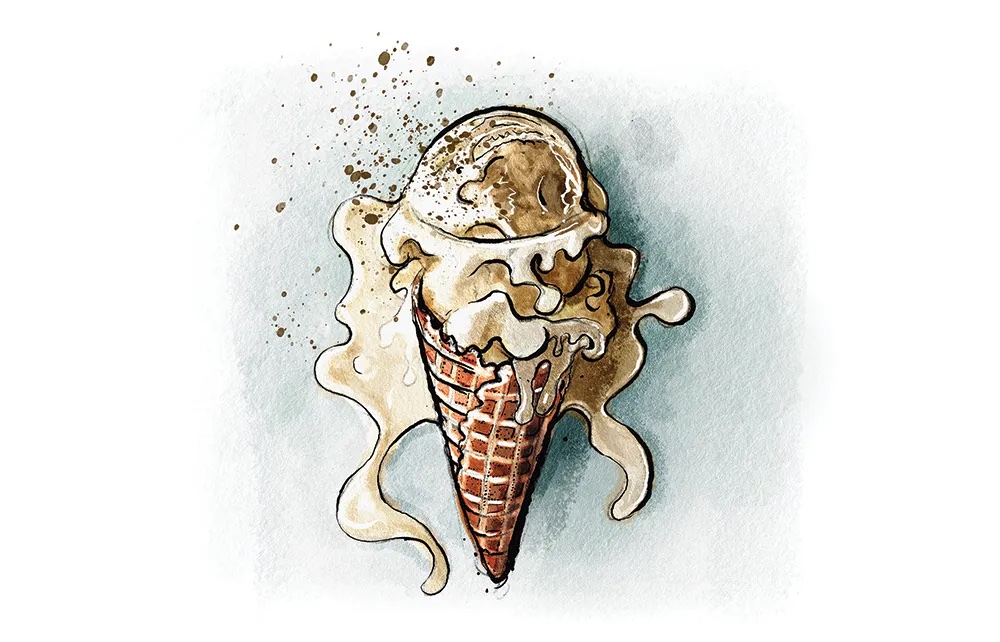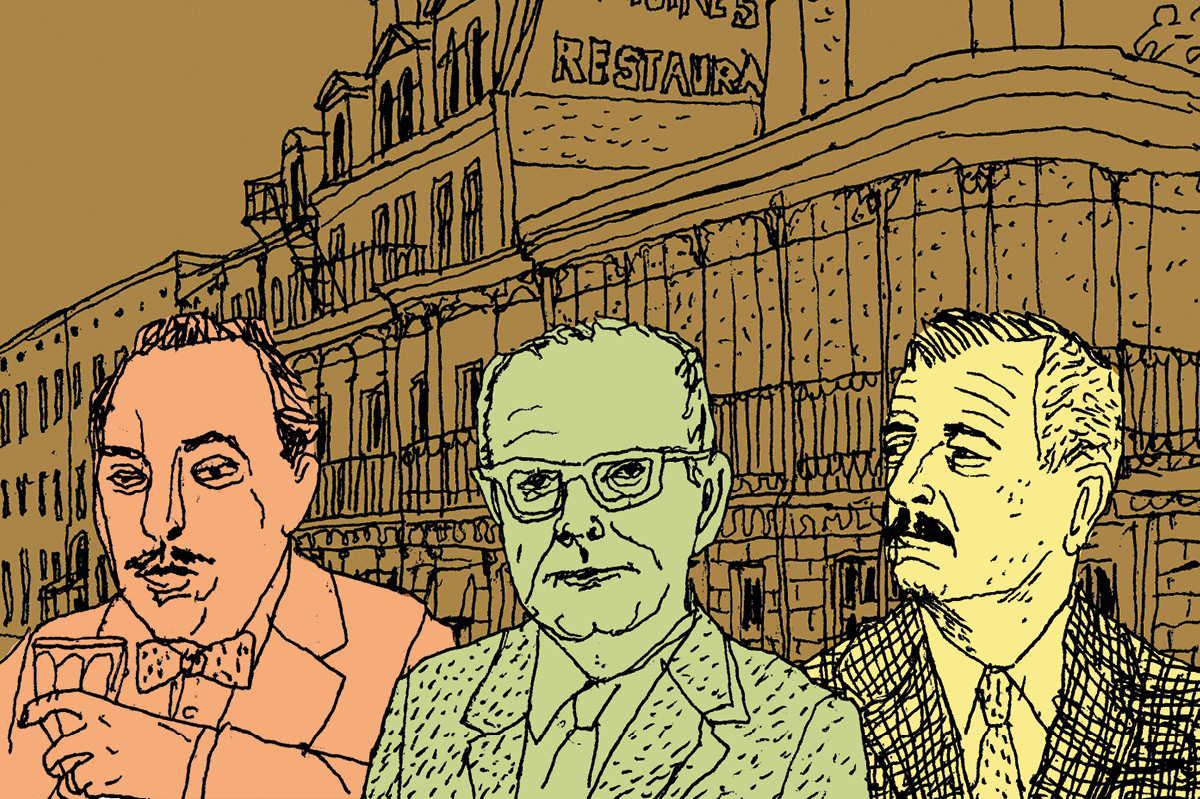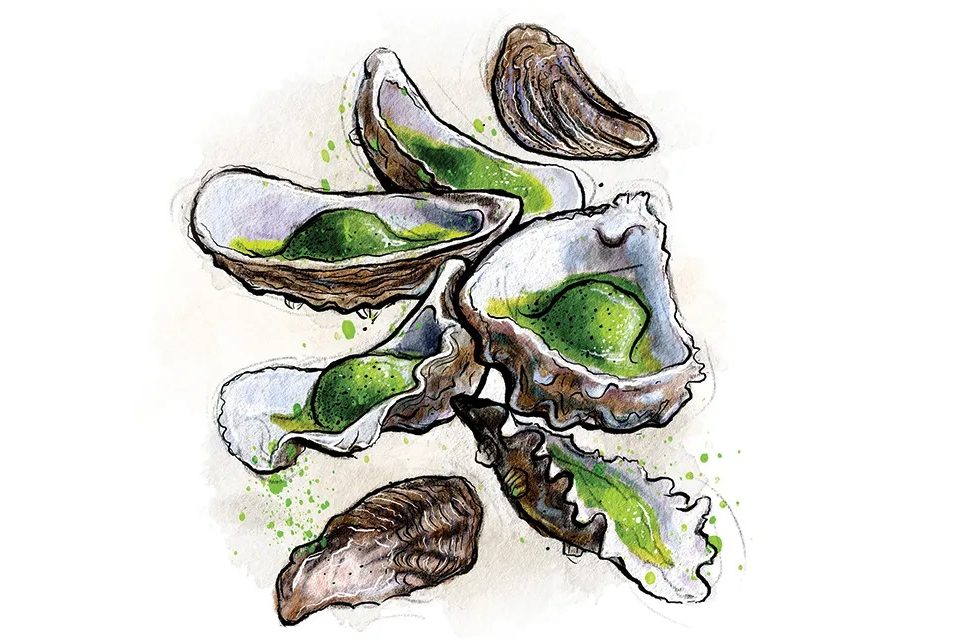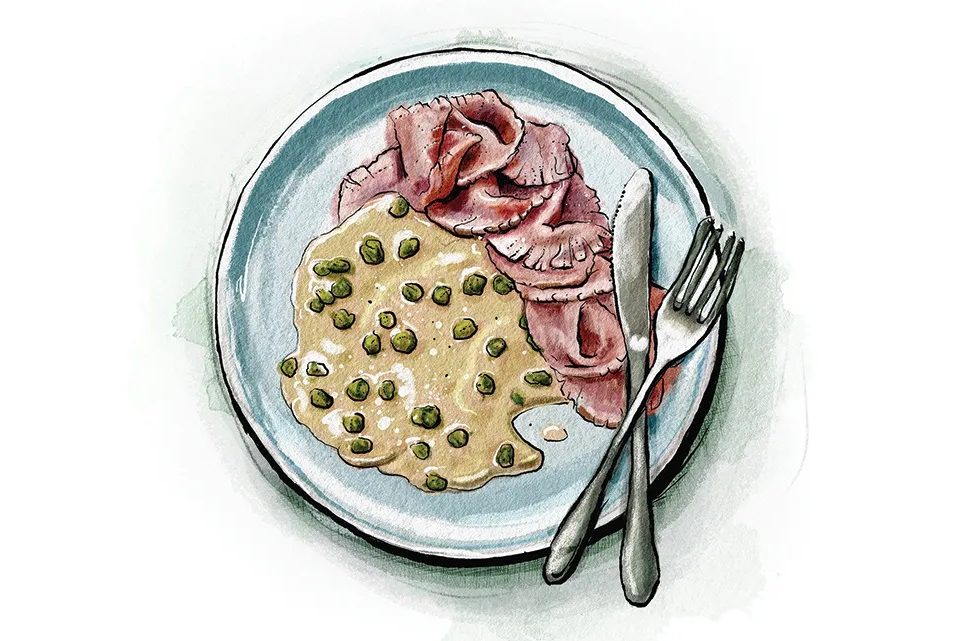I confess, the idea of a tres leches cake did not initially appeal to me. A dry sponge soaked in a variety of tinned milks sounds, at best, like bland kindergarten food and, at worst, tooth-achingly saccharine. ‘Milky’ has never been one of the words that I hope to see in connection with anything other than ‘coffee’ or ‘Way’. But I saw it likened to trifle and curiosity got the better of me — and I’m so glad it did.
Actually, a tres leches cake is not terribly like a trifle at all, although I can see where the comparison came from. Soaked puddings are nothing new, and that’s really what a tres leches cake is. Meaning ‘three milks’, it is made from a simple, vanilla-scented sponge, which is then soaked with three different milks: condensed milk, evaporated milk and thick cream; on top is a thick layer of barely-sweetened cream. Served cold from the fridge — as it should be — it is sweet and cool and squidgy, unlike anything I’ve ever tasted before. Yes, a little like a trifle, but creamier; a little like cake but saturated, without becoming soggy. It will sit proudly on your plate in a neat square, but you’ll need a fork to eat it. It has that distinctive, slightly nostalgic flavor of condensed milk, but the barely sweetened fresh cream stops it from becoming cloying.
The cake is beloved across Latin America, and there are recipes from Mexico, Guatemala, Cuba, Nicaragua, Puerto Rico and Panama. It’s not entirely clear from where precisely the cake originated; some point to the opening of a Nestlé factory in Mexico around the time of World War Two, and the marketing technique used by Nestlé of putting recipes on the sides of their tins of condensed milk. But others think that that’s putting the cart before the horse, that the recipe Nestlé used was taken from local cooks.
There are a number of different ways to make the cake: some use butter, some don’t, some use nuts, some don’t. I’ve kept it simple: my version is essentially a whisked sponge. This is done by separating the yolks and whites of the eggs and whisking them separately until inflated and stable, and combined with flour and sugar and baking powder, and a bit of milk, then baked until firm. The lack of butter and presence of meringue in the batter ensure a very light and dry cake — and that’s exactly what you need if you’re going to pour over a pint of liquid over it, and not reduce it to mush. Looking at the quantity of those ‘milks’ in a jug, it seems implausible that the cake could ever possibly soak them up, but have faith. This is a thirsty cake.
There are all sorts of ways to dress up a tres leches cake. Melissa Clark adds coconut milk and dulce de leche to turn it into a ‘seis leches’ cake, while royal wedding cake maker, Claire Ptak adds peanut and coconut to her version. Stella Parks makes her own twinkies, an American golden snack cake, for the base for her cake. Rosie Reynolds favors hazelnut liqueur, while Bon Appétit magazine adds rum to every element. Others add coffee (too much like tiramisu for my liking, which is lovely, but an entirely separate thing), caramel or mango. But I rather like the cake in its original form, unembellished, sweet and soft, cool and creamy.
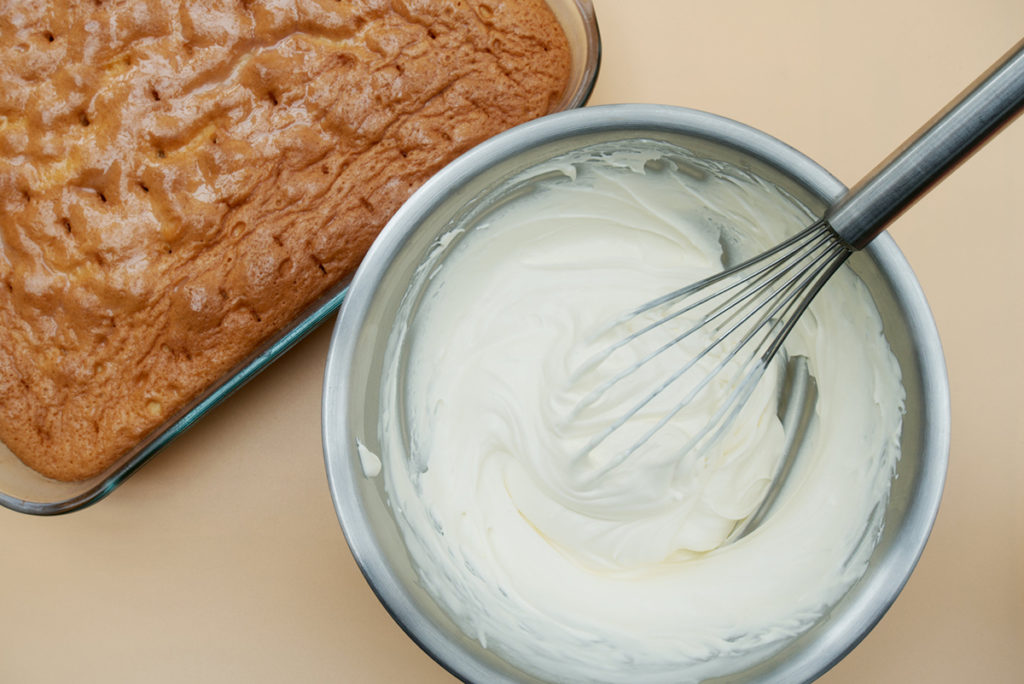
Tres leches cake
Makes: 12 squares of cake
Takes: 15 minutes, plus chilling
Bakes: 35 minutes
5 eggs, separated
7 oz caster sugar, divided
1 teaspoon vanilla paste
1½ teaspoons baking powder
7 oz plain flour
2½ fl oz whole milk
12 oz evaporated milk
14 oz condensed milk
2 oz double cream
10 fl oz double cream
2 tbsp icing sugar
- Preheat the oven to 350°F, and grease a 9×13 inch pan with a little oil
- Whisk the egg whites until foamy, then gradually add 3½ oz of sugar, whisking the whole time until the meringue forms medium peaks
- Whisk the yolks with 3½ oz of sugar until thick and creamy. Add the vanilla paste, fold the flour and baking powder through the yolks, followed by the milk. Take a large spoonful of the meringue mix and stir it thoroughly into the rest of the cake mixture. Then gently fold the rest of the meringue into the cake batter in three additions
- Decant the cake mixture gently into the cake pan, and smooth the top. Bake for 35 minutes until risen and golden brown
- Mix together the condensed milk, evaporated milk and double cream together in a jug. When the cake comes out of the oven, poke it all over with a skewer, right up to the edges, then pour the milk mixture over the top — it will seem like too much liquid, but the cake will absorb it. Let the cake cool, then chill in the fridge until completely cold
- Whisk the double cream and icing sugar together until they reach soft peaks. Tip the whisked cream onto the cold cake and smooth gently to create an even layer. Slice into 12 squares and serve immediately, or refrigerate until you’re ready to enjoy it
This article was originally published on Spectator Life.



